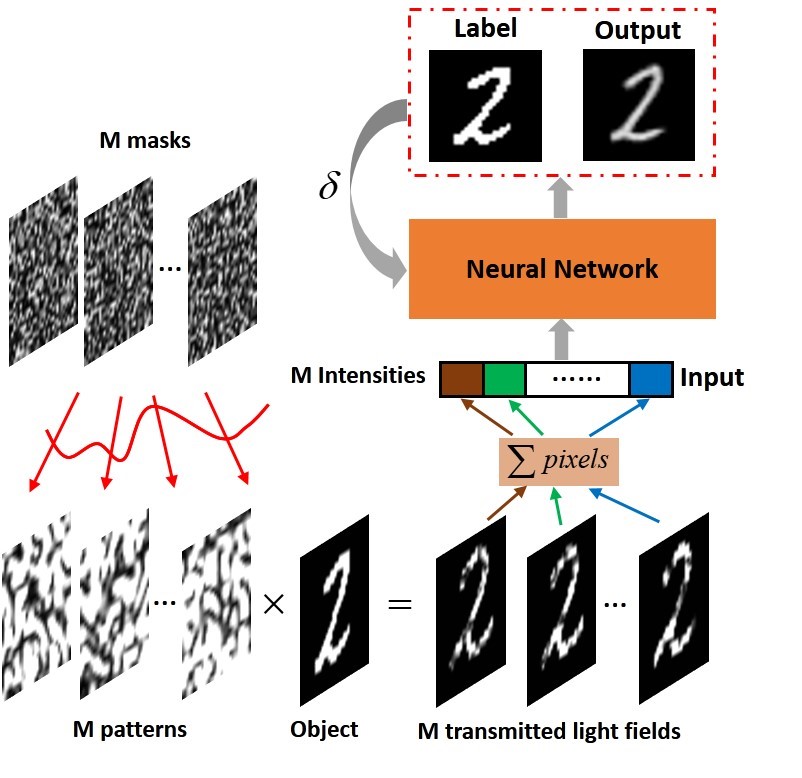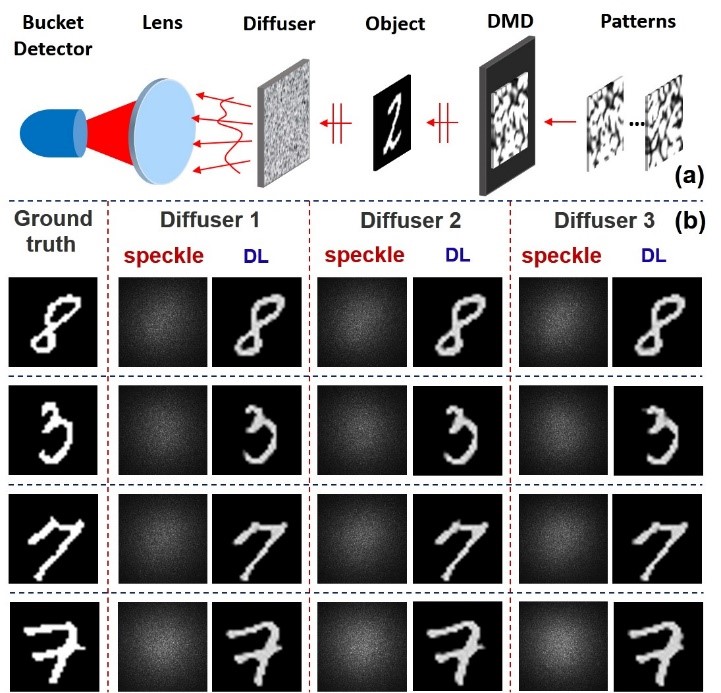It has shown that computational imaging (CI) enjoys the rapid development of artificial intelligence, especially deep learning. However, existing learning-based CI methods usually need to experimentally collect a large number of input-output data pairs to train a neural network in a stable environment. This imposes limitations on the practical applications of the method.
Recently, a research team in Shanghai Institute of Optics and Fine Mechanics of the Chinese Academy of Sciences (CAS) proposed a novel deep-learning-based CI scheme, which used simulation data to train a neural network for experimental image reconstruction. This work was published in Optics Express.
In their experiment, the computational ghost imaging (CGI) was an example to demonstrate their method. They developed a one-step end-to-end neural network that was trained with simulation data to reconstruct two-dimensional images directly from experimentally acquired one-dimensional bucket signals without the need of the sequence of illumination patterns.
First, they generated the training set by numerically modeling the CGI physics, and used these data to train a neural network model (see Fig. 1). Then they built a CGI experimental system with the same geometry as in the simulation. They demonstrated that the trained neural network could recover 2D images from the experimental data at a sampling ratio as low as 6.25%. Compared with traditional CGI algorithms based on intensity correlation and compressed sensing, the proposed method has much better performance at low sampling rate (see Fig.2).
In the case of existence of scattering media between the bucket detector and the object, the proposed method does not need to model the scattering process when calculating the bucket signals for training. Instead, it can be scalable to different scattering media by taking the advantage of ghost imaging, which reconstructs the object image using the integration its speckle patterns. (see Fig. 3).
This work was supported by the Chinese Academy of Sciences and the Sino-German Center.

Fig. 1 Data generation and network training process (Image by SIOM)
Fig. 2 Comparison of simulation and experiment data (Image by SIOM)
Fig. 3 Imaging through scattering media (Image by SIOM)
Article website: https://www.osapublishing.org/oe/abstract.cfm?uri=oe-27-18-25560&origin=search
Contact:
Mr. Cao Yong
General Administrative Office
Shanghai Institute of Optics and Fine Mechanics, CAS
Email: caoyong@siom.ac.cn